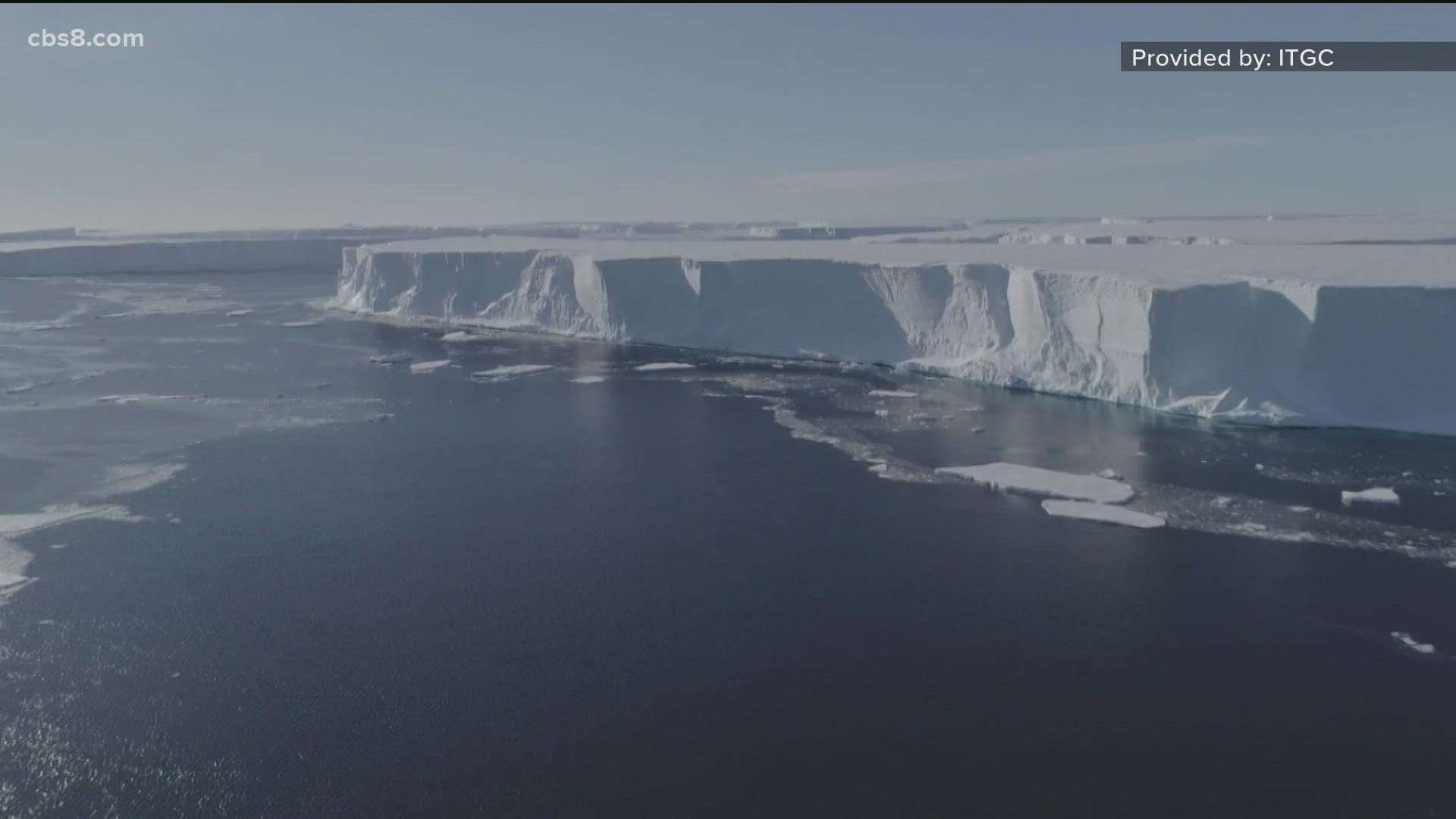SAN DIEGO —
Antarctica holds nearly 90% of all the fresh water on Earth. The Thwaites Glacier is on the west side of the continent and is being threatened by warming sea surface temperatures.
Dr. Pat Abbott has been to the Antarctic multiple times and says the Thwaites Glacier is responsible for 4% of sea-level rise. But with climate change happening and sea surface temperature on the rise, it could be a lot more
"It's one of the largest glaciers in the world. It is a very unstable glacier, and our measurements show it's becoming more unstable and it's a real concern," said Abbott.
That's because the forces that have been in place are changing.
"The Thwaites Glacier is sitting on land, here's this ice plug that's sitting on the seafloor. Think of it as a concrete dam in a reservoir holding water behind it," said Abbott.
That is happening because ocean water temperature around the Antarctic is two to three degrees above normal and accelerating the process.
"So, melting on the bottom from warmer water, melting on top from sunlight, fracturing apart as it moves, and then caving off big pieces. So, this thing is being destroyed by three processes basically," said Abbott.
The amount of ice being held back by the buttress is immense. Over land the Thwaites Glacier can be over 3,000 inches thick.
"I think the size of ice we're talking about when we say the Thwaites Glacier is about the size of Florida, and when that goes it destabilizes the rest of the western Antarctic. That ice is bigger than the state of Alaska," said Abbott.
This is why scientists are working so hard to understand what is happening on the Thwaites Glacier before we reach that tipping point.
"If we were to melt the entire Thwaites Glacier, this isn't going to happen overnight. If you melted the whole thing the sea level would rise two inches. But the main point, it's in front of an unstoppable process."
WATCH RELATED: Earth 8: How female hummingbirds are changing their appearance to take advantage of the ecosystem (Sep. 2021).

